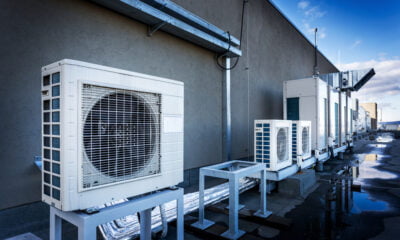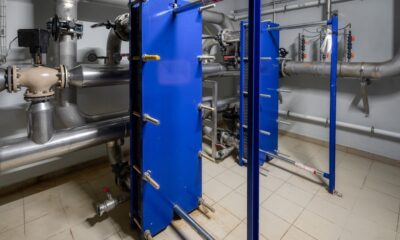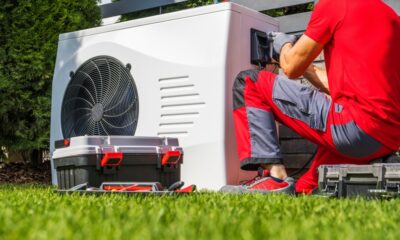

Energy
10 Top Tips for Energy Efficiency around the Office
The advice below will help to reduce energy consumption around the office
1. Labelling the Light Switches
Labelling the light switches might appear insignificant but it is particularly important for any multiple light switches. People often come into the office and switch on all the lights since nobody has ever paid close attention to the switch that actually operates the lights. Labelling the switches using stick-on labels helps in identifying lights that can be switched off when nobody is working in that area or on sunny days.
2. Switching Off the Lights in Occupied Rooms & the Installation of Sensors
Most offices usually have photocopier rooms, store rooms, kitchens, and archive stores. Use “Turn off this light” stickers to label switches and get everybody into the practice of switching off the lights once they leave. Installing occupancy sensors is the next step, which can be simple wall-plate replacements. Occupancy sensors are especially useful for toilets, where we have witnessed an eighty percent reduction in lighting use. Ensure that they are properly placed.
3. Lights Off – Blinds Up
Many offices usually leave the blinds shut all day particularly due to the early morning glare. Whenever possible, open the blinds to allow the sun to shine in then switch the lights off.
4. Retrofitting Lamps Whenever Possible
You can do two easy retrofit solutions for your lights. The first one involves replacing 50W tungsten halogen spotlights with LED spotlights. The LED spotlights might appear to cost a lot but the hassle and cost of perpetually replacing blown lamps quickly repays the outlay. The second one involves using “T8 to T5” converters on fluorescent lighting. Here you simply swap out the wide diameter T8 (0.75”) tubes for an electronic gizmo and a T5 (5/8”) tube. You will enjoy savings of about 20 to 40 percent of electricity depending on the hours of use and size of tube. LED strip lamps are increasingly becoming affordable especially for round-the-clock use. Complete lighting refit might cost more than retrofits but usually pays back in about 4 years.
5. Sleepy PCs
When leaving for home after work, either turn off your screen, put your computer to sleep (hibernation), or switch it off. If the IT department does not allow this, have them install a centralized PC shutdown system like “Nightwatchman”. Such systems easily pay for themselves in terms of energy savings. Ensure that all other office equipment such as projectors, display TVs, faxes, photocopiers, and printers are all set to energy saver mode. You can even use timers to make it easier to switch off during weekends and overnight. Switch off desk-lamp transformers, laptop and phone chargers when not in use.
6. Increasing the Temperature in the Server Room
Cooling IT equipment is critical for keeping it operating normally. However, the common practice since back in the day was to keep it around 18 C all year round. If you walk into most of the server rooms the chill will be apparent. Keeping these rooms cool uses a lot of electricity. However, the IT equipment of today is much more robust than that of the 1970s. ASHRAE recommendations give a humidity and temperature range accepted by the IT community. The recommendation is between 18 and 27 degrees C meaning that a central set-point of 25.5 with a range of +/- 1.5 degrees is probably appropriate for reducing energy significantly. New guidelines are expected that will allow for even higher temperatures for some servers and their displays. Obviously, the closer to the top of the temperature range that you can reach, the less the energy that will be required for chilling.
7. Understanding Heating Controls
Office heating is usually zoned and remote controlled. Make a plan of your office then mark the thermostats that control particular zones. Let the people know the thermostats that operate their heating and how they work.
8. Getting To Know Your Energy Manager
Build a friendship with your facilities or energy manager (whoever controls the Building Energy Management System). Inquire about the set points and times they have and seek how together you can shave a couple of minutes here and there. Some of the larger organizations often have Heating Policies provided to all employees stating the set times and temperatures for cooling and heating.
9. Air Conditioning Dead-band
Ensure that the air conditioning system is not actually fighting your heating. You should have a “dead-band” of between 19 and 24 C where there is neither cooling nor heating. This ensures that the regularly encountered lunacy of cooling and heating simultaneously never happens. You could also call for the installation of window interlocks on the air conditioning system by the powers that be to ensure that once the windows are opened, the air con switches off. Failing to do so means that you are attempting to cool the entire world.
10. Kitchens
Check the fridge. If it resembles an iceberg inside, you need to get a new A+++ refrigerator and recycle the 1980’s unit with no icebox cover. Have timers on the “ambient” drink machines to ensure that they are off during the weekends and overnight. Replace the boiler or kettle with an instant boiling water dispenser.


 Environment10 months ago
Environment10 months agoAre Polymer Banknotes: an Eco-Friendly Trend or a Groundswell?

 Environment12 months ago
Environment12 months agoEco-Friendly Home Improvements: Top 7 Upgrades for 2025

 Features9 months ago
Features9 months agoEco-Friendly Cryptocurrencies: Sustainable Investment Choices

 Features10 months ago
Features10 months agoEco-Friendly Crypto Traders Must Find the Right Exchange





























